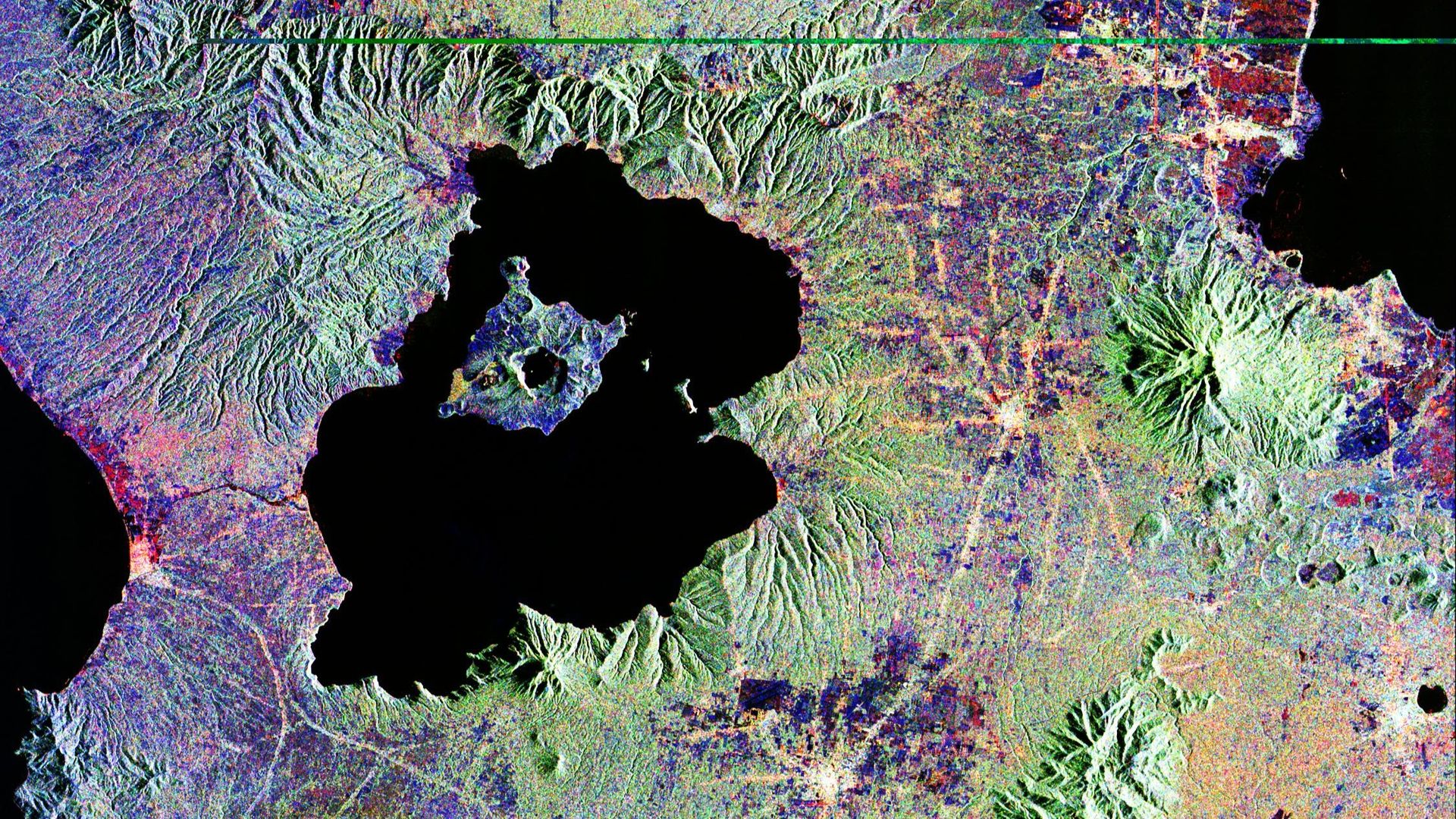Follow us on Google News (click on ☆)
This lake occupies the caldera of Taal Volcano, a depression formed during prehistoric eruptions. The water, initially salty, came partly from the sea via the Pansipit River, until an eruption in 1754 severed this connection and transformed the lake into a freshwater reservoir. This metamorphosis trapped marine species, forcing them to adapt.

Lake Taal contains an island, which itself has a lake containing another island.
Credit: NASA
Volcano Island, at the center of the lake, is a geological spectacle in itself. It hosts the Main Crater Lake, which contains Vulcan Point, a microscopic island. This unique configuration is often described as a natural Russian doll, with its multiple levels of islands and lakes.
Lake Taal's transformation into freshwater gave rise to unique species, such as the freshwater sardine and a venomous sea snake. These rapid adaptations provide a living laboratory to study species' quick evolution in response to environmental changes.
Today, Lake Taal is the third largest lake in the Philippines, but its ecosystem is threatened. Overfishing, tourism, and water extraction for irrigation endanger this unique natural heritage, despite its protected landscape status.
How can a marine lake become a freshwater lake?
The transformation of Lake Taal from a marine to a freshwater environment is a rare geological phenomenon. It was caused by a volcanic eruption in 1754, which blocked the connection to the sea.
Marine species trapped in the lake had to quickly adapt to these new conditions. Some, like the sardine, evolved to survive in a completely different environment.
This process offers a unique window into species evolution. Scientists study these adaptations to understand how life can persist in the face of drastic environmental changes.
Lake Taal is now a freshwater ecosystem, but its marine history is still visible in its endemic species.
What is a volcanic caldera?
A caldera is a large depression formed after a volcano collapses following a major eruption. Unlike craters, which are smaller, calderas can extend for miles (kilometers).
Lake Taal occupies such a caldera, created by eruptions thousands of years ago. These events shaped the current landscape, with its nested islands and changing waters.
Calderas are often sites of ongoing volcanic activity. Taal Volcano, for example, has experienced 38 eruptions over the past 450 years, demonstrating the dynamic nature of these geological structures.
Understanding calderas is essential for predicting future eruptions and protecting nearby populations.